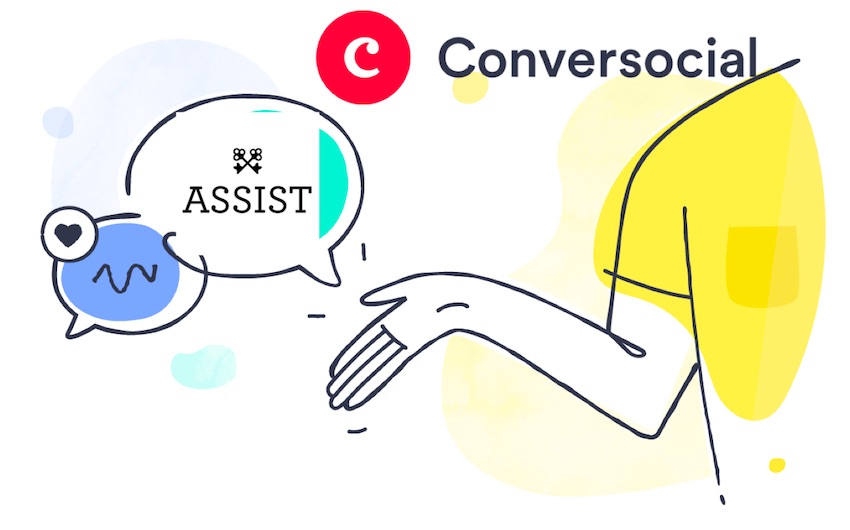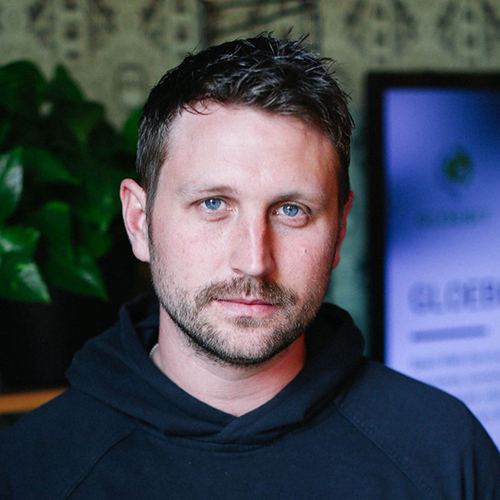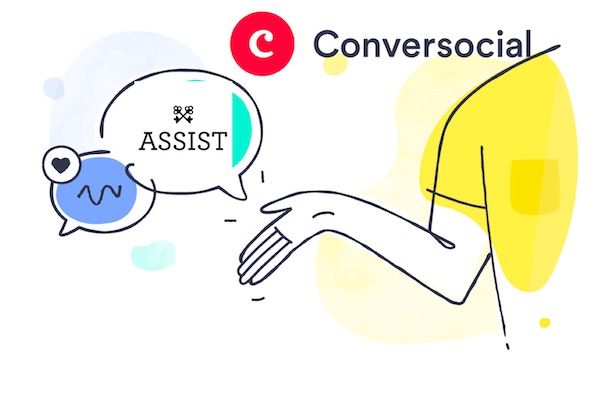Conversocial Acquires Assist, an Interview with Shane Mac

Conversocial, the UK-based social media management and customer service software provider, last week acquired Assist, a conversational solution provider for chatbots and voice applications. Assist is known for its work deploying Facebook Messenger chatbots for leading brands and for being among the first solution providers to launch a Google Action when Google Assistant premiered in 2016. In 2018, Assist also started deploying Apple Business Chat solutions including an in-stadium real-time ordering bot at sports stadiums. Shane Mac, Assist CEO and co-founder, outlined that use case in Voicebot Podcast Episode 54, the week after the solution completed its first live test at a Phillies baseball game in Philadelphia.

Joshua March, Conversocial CEO
Assist was co-founded in 2015 by Shane Mac, Giovanni Vatieri, and Robert Stephens who is best known for founding Geek Squad and later selling it to Best Buy. The company had raised $5.5 million, most recently a $4 million round in April 2015 according to Pitchbook. Mac has been named Conversocial’s chief automation officer and tells Voicebot that Assist’s nearly 35 employees will all join Conversocial. Joshua March, CEO of Conversocial, declined to reveal the purchase price in an interview with Business Insider. His company has previously raised $25 million, including an $11 million round in 2015 and has over 70 employees according to Pitchbook data. March told Business Insider’s Lauren Johnson the rationale behind the acquisition was to offer tighter integration between bots and humans.
Messaging has this huge opportunity to combine bots and humans, which we think will allow businesses to start implementing automation in a meaningful way that they’ve struggled with over the past decade.
Friction, Conversational Commerce and Offline to Online Integration
In a 2017 Voicebot interview, Assist CTO at the time and now VP of product design, Stephane Nguyen said that Assist was focused on conversational solutions for Twitter DMs, Facebook Messenger chatbots, and voice apps for Google Assistant and Amazon Alexa. Early work with conversational solutions for Sephora and Lonely Planet led the company to focus on removing friction in consumer interactions with brands to facilitate commerce opportunities. Nguyen said at the time:
Removing the friction is everything to us. Conversational commerce is coming. Conversional commerce will be way better [than what we have today]. Removing the friction while doing a simple transaction is a main focus right now.
Since that time, Assist added Apple Business Chat and WhatsApp integrations and has emphasized enabling offline-to-online consumer experiences. The Sephora project was designed to drive consumers into stores by automating class bookings using Facebook Messenger. Another Messenger project integrated a $10 coupon from Lyft that could be scanned from Tostitos chip bags.

Shane Mac, Assist
Creating a “Killer” Consumer Experience – Shane Mac Interview
Voicebot caught up with Shane Mac after the acquisition was first revealed last week to learn a bit more about the motivation behind the move and where the combined companies are headed. It is worth noting that Assist was predominantly focused on consumer engagement and marketing activities while Conversocial’s primary background is in customer service automation. The tie-up has the potential to bring bot automated interaction to Conversocial’s more than 250 existing customers as well as extend its offerings from customer service into marketing promotion and conversational commerce. Conversocial’s Joshua March expanded on this idea in a recent Tweet.
Together we can deliver amazing experiences for brands that span customer care, commerce, and marketing—combining bots and humans in messaging, enabling brands to build real 1:1 relationships with consumers at scale
— Joshua March (@joshuamarch) March 15, 2019
Why was Conversocial a good partner for Assist to combine with?
Shane Mac: In acquisitions like this, it’s always great to try each other out before you commit. Conversocial was one of the first platforms we integrated with over 2 1/2 years ago. Since then, we’ve done many integrations and launches together and after a while, it just made sense to have the full end to end solution. The future is a combination of bots + humans and by having the entire solution we can have a much bigger impact and go a lot faster. There’s a lot of companies only doing bots or only doing agent software. They say they can “integrate” with each other easily but we’ve found that this is not the case. It takes one team all aligned to build the best experience.
Why was now the right time to sell?
Mac: It’s still early. Apple and WhatsApp just opened up in the last 12 months. Both of them require brands to have an agent available if the automation can’t help. This looks like the way it’s going to be for a few more years so it made sense to bring it all together to go bigger.
What role did Assist’s technology play in the acquisition?
Mac: The platform is a key piece of the partnership. We’ve already integrated the systems together with brands we work with. We have a product called Switchboard which allows the 2 systems to share information and work together seamlessly so there’s a clear handoff between bots and people.
Will the team be moving from San Francisco or serve clients from your existing locations?
Mac: Nope. We now have a San Fransisco, NYC, and London office to serve customers globally.
What do you see at the biggest barrier inhibiting brands from using conversational voice and chat apps more in their consumer engagement efforts?
Mac: Honestly, the demand is there and brands are moving this way. It’s less of a technical problem and more of a “what person should own this channel? Is it marketing, sales or service?” Now that we have a full offering, we can bring this all together under one roof with multiple teams. That’s the key. It’s not one or the other, it’s all.
What do you believe will be the catalyst that will spur a significant increase in brand use of voice assistants and chatbots in their consumer engagement efforts?
Mac: When you see platforms like Apple adding the “message us” icon before the website and phone in search results, maps, and Siri, it’s easy to see how search could forever shift and drive all of that digital traffic to messaging over website, app or phone. This is happening today. I imagine Google will explore things like this too. Imagine every Google search result says “message” vs a link or a phone number.
Voice is a little different. The device is always listening. I don’t think it’s a discovery problem but consumers experiencing voice agents that are great, simple, and make sense to use daily. I think we have yet to see the killer voice experience and that should change the consumer behavior drastically.
Was the acquisition all cash, all equity or a hybrid?
Mac: Hybrid. We really are excited about the equity and upside as a combined company. The market is bigger than anything we’ve ever seen and it’s barely even started.
What was the acquisition price?
Mac: Big enough to make it worth it, small enough to keep going at something much bigger together.
Follow @bretkinsella Follow @voicebotai
Shane Mac CEO of Assist Says The Talking Internet is Here – Voicebot Podcast Ep 54
Assist Wants Conversations to Always Move Forward Through Active Listening









